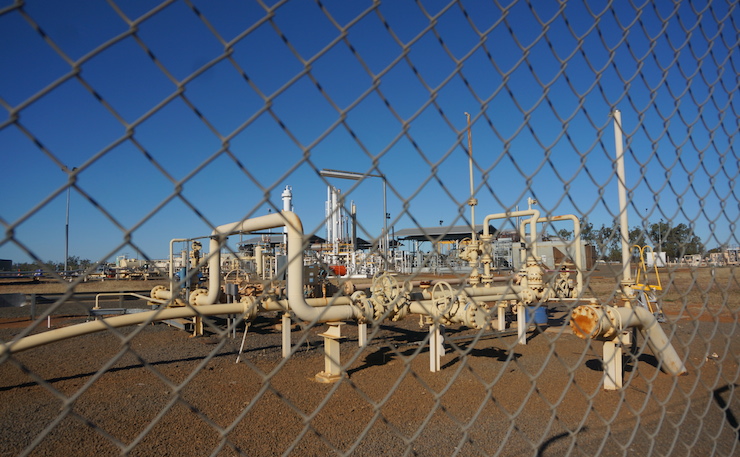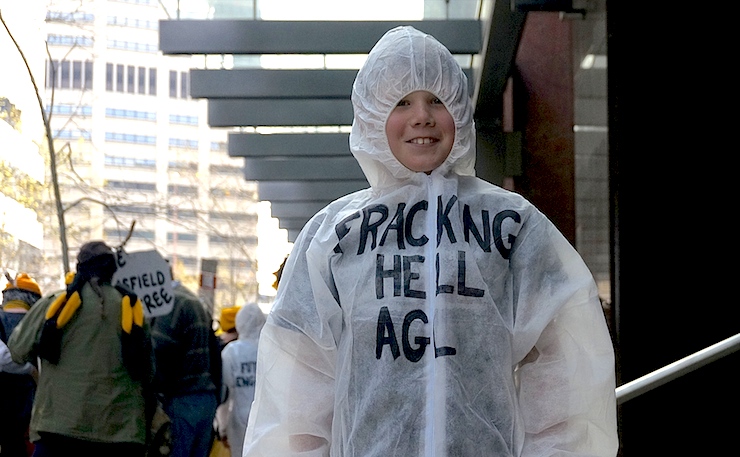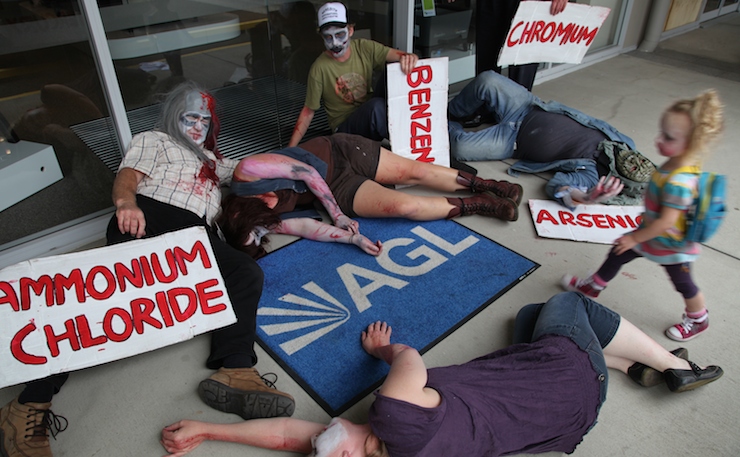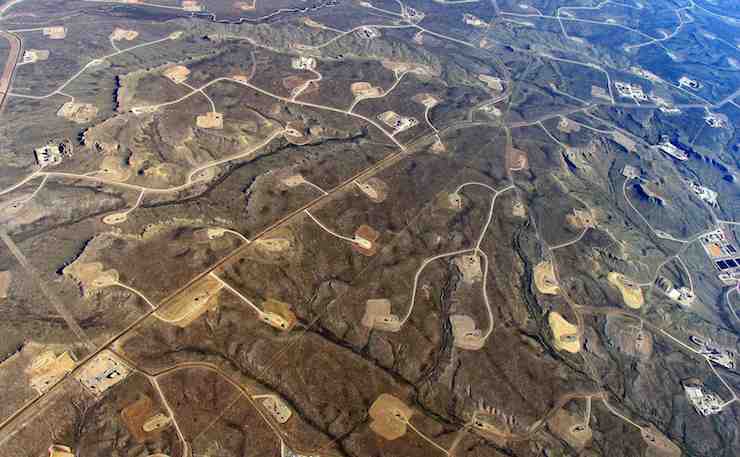New data from the National Pollution Inventory has exposed the increasingly large quantities of toxic compounds the coal seam gas industry is pumping into the atmosphere, as production ramps up around Australia.
The latest figures, released Friday, have bolstered concerns about the health impacts of unconventional gas.
“What this data shows is that toxic pollutants that harm health are on the rise from both the coal and gas industries, with huge increases in particulate and chemical pollution,” said Fiona Armstrong, Executive Director at the Climate and Health Alliance.
Dr Mariann Lloyd-Smith, a Senior Advisor at the National Toxins Network, said the communities around Chinchilla and Tara, in south-east Queensland, appear to be the worst-affected. She cited Queensland Gas Company’s Kenya Processing Plant and Compressor Stations, near Tara, as one example of how pollution is on the rise.
Dr Lloyd-Smith noted a sharp increase in course particulate matter (PM10) at the ‘Kenya’ facility. In the year to 2012, the facility emitted just 54 tonnes; but by 2014-15, the company posted particulate matter emissions of more than 1,000 tonnes.
The well-respected expert said particulate matter acts as an agent, carrying other toxic compounds and “delivering them deep into the lungs of all that breath them in”. Like particulate matter, toxic compounds are rising sharply at the ‘Kenya’ facility.
Nitrous oxide emissions have risen from 710 tonnes in 2013-14, to 1,300 tonnes in 2014-15; carbon monoxide emissions have more than doubled in the same time period, to 1,000 tonnes; and volatile organic compounds emissions have grown to 180 tonnes, in 2014-15.
Emissions at other facilities have been even higher.

Dr Lloyd-Smith said newly developed CSG export facilities near Gladstone are also “a real worry”.
“The Curtis LNG plant is an export facility, which claims to give the world ‘clean green energy’,” she said. “But in just one year, it has released a whopping 4,800 tonnes of deadly carbon monoxide, 4,300 tonnes of nitrous oxides, 620 tonnes of volatile organic compounds and 190 tonnes of carcinogenic formaldehyde.”
The coal industry’s contribution to PM10 air pollution – a coarse pollution particle about the width of a human hair – has also been met with alarm. It skyrocketed by 69 per cent in 2014-15, crowning off a 194 per cent increase over the last five years.
Air pollution is thought to kill around 3,000 Australians each year, and increases in toxic emissions could be even greater than they appear. Dr James Whelan, a researcher at not-for-profit Environmental Justice Australia, said the national pollution data is “very unlikely to be an over-estimate”.
“Each industry has a handbook that was written primarily by the industry to estimate their emissions. There isn’t any auditing of those self-reports, and they’ve been found to be in error reasonably often,” he said. “We tend to think of them as a conservative estimate.”
According to Dr Lloyd, “it is important to acknowledge that he pollutants listed on the National Pollution Inventory are the worst of the worst”.
“Many are acknowledged as carcinogens, neurotoxins and developmental toxins: Exposure to these can have significant impacts on human health and the scientific literature is full of studies showing the impact of exposure to air pollutants such as these,” she said.

Fiona Armstrong said it’s also important to note that the National Pollution Inventory data doesn’t account for carbon dioxide or methane emissions. “The health risks from the coal and gas industries are serious and potentially deadly at the local level, but they have an even bigger, and longer-range health impact by contributing to global warming,” she said.
In the case of the gas industry methane production, which Armstrong said is 72 times more powerful a greenhouse gas over a 20-year period, is especially significant. Last year a methane leak in the mountains above Los Angeles dominated headlines, spewing out enough pollution to match around 600,000 cars.
There is growing concern internationally that so-called ‘fugitive emissions’ – methane emitted through drilling, leaks and flaring, and not officially accounted for – could represent a far larger source of greenhouse gas emissions than previously thought.
According to Armstrong, “recent reports suggest methane emissions from shale gas facilities in the US are 90 per cent higher than reported by the Environmental Protection Agency”.
The release of the latest National Pollution Inventory data comes at a bad time for the unconventional gas industry, with gas prices tanking and community sentiment increasingly hostile. Yesterday, the Queensland Government banned a mining technique known as Underground Coal Gassification, citing environmentally disastrous trials which have landed Linc Energy in court.

While complaints of rashes, nose bleeds, headaches, and joint and muscle pain – particularly among children – have plagued the industry, there is a dearth of detailed study into how the burgeoning industry is affecting communities. The industries peak body has consistently denied claims of adverse affects.
For Dr Lloyd-Smith, a widely respected expert who has contributed to United Nations reporting, the lack of exhaustive study is worrying.
“Our concern based on a wealth of health studies from overseas and our limited experience here, is that if the industry is allowed to continue with the idea of coexistence with farmers and rural residents we will see many, many more health issues emerge,” she said.
Donate To New Matilda
New Matilda is a small, independent media outlet. We survive through reader contributions, and never losing a lawsuit. If you got something from this article, giving something back helps us to continue speaking truth to power. Every little bit counts.





